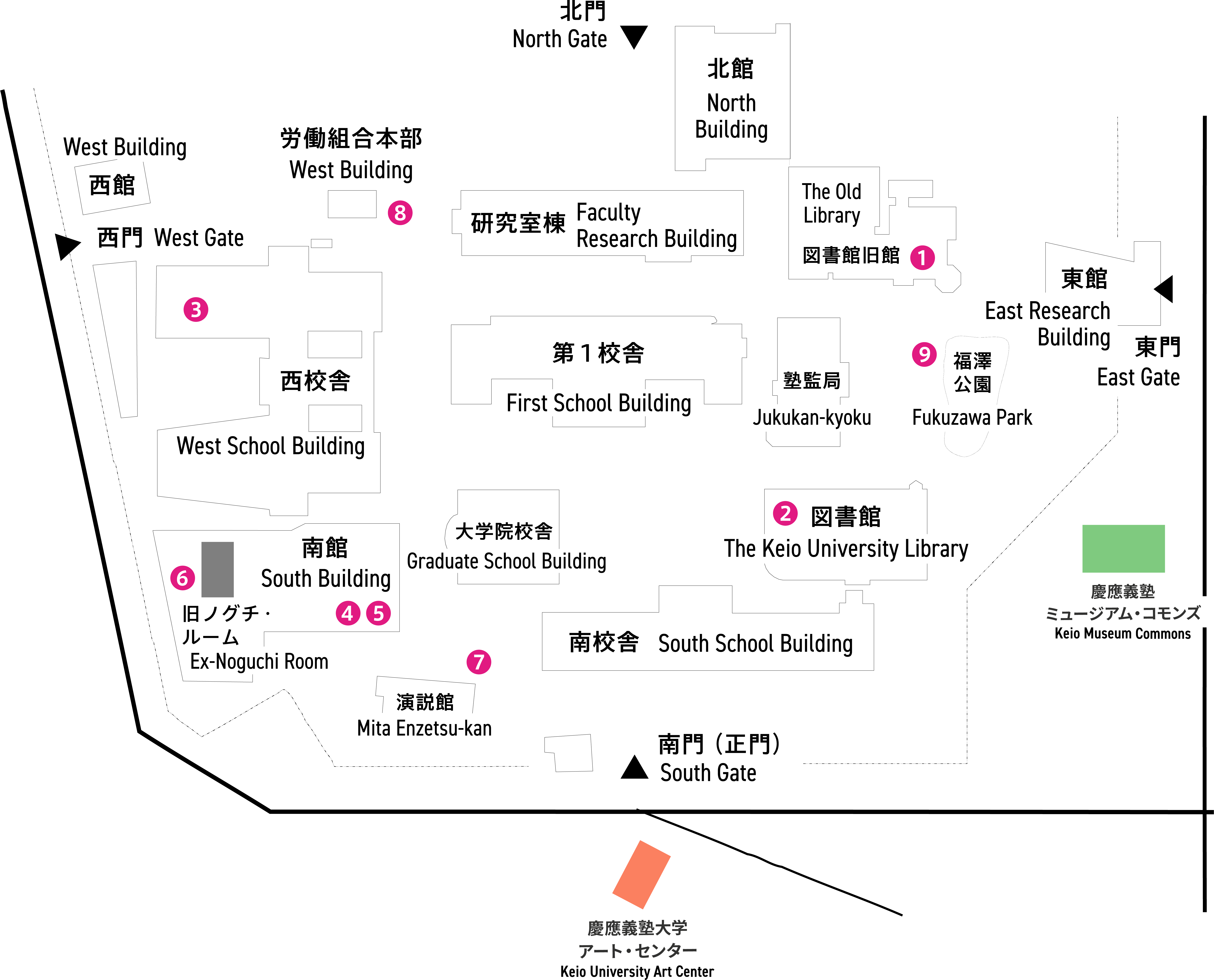

会場内およびキャンパス内の作品横に提示されたガイド番号を入力すると、文字・音声で解説をお楽しみいただけます。
モバイルガイドの使い方
You can enjoy the commentary in text and voice by entering the work number presented next to the work in the venue and on campus.
How to use our Mobile Guide
ピックアップ作品
FEATURED

本展覧会の会期中は、南会場(慶應義塾大学アート・センター)と東会場(慶應義塾ミュージアム・コモンズ)に加えて、キャンパス内に点在している作品群もご覧頂けます。以下の開館時間を参照のうえ、ぜひお楽しみください。

During the exhibition period, visitors are able to see the works in the South Venue (Keio University Art Center) and the East Venue (Keio University Museum Commons), as well as the works spread around the campus. Please refer to the opening hours below.
開館時間(11/29-12/3)
| アート・センター | 11:00 - 18:00 |
|---|---|
| ミュージアム・コモンズ | 11:00 - 18:00 |
| 三田メディアセンター | 08:45 - 20:00 |
| 慶應義塾史展示館 | 10:00 - 18:00 |
| 西校舎 学生食堂ホール | 11:00 - 15:00 |
| 旧ノグチ・ルーム | 閉館 |
開館スケジュール一覧
OPENING HOURS(11/29-12/3)
| Keio University Art Center |
11:00—18:00 |
|---|---|
| Keio Museum Commons |
11:00—18:00 |
| Keio University Library |
08:45—20:00 |
| Fukuzawa Yukichi Memorial Keio History Museum |
10:00—18:00 |
| Co-op Cafeteria [B1F, West School Building] |
11:00 - 15:00 |
| Ex-Noguchi Room | Closed |
Opening Schedules



